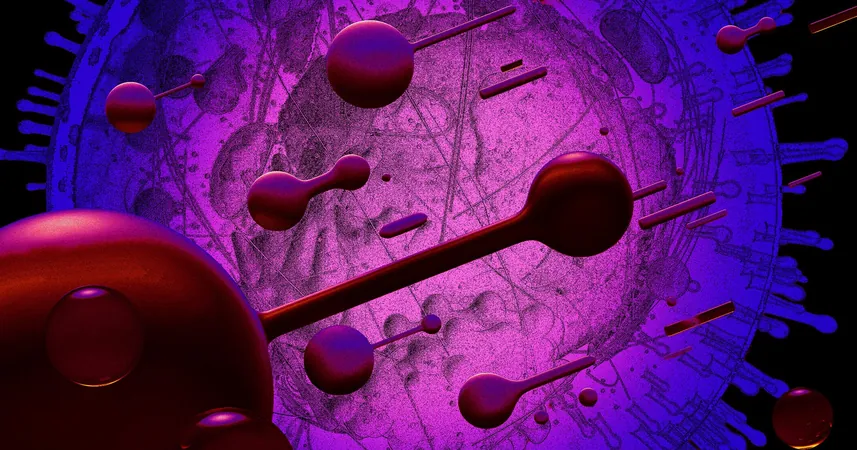
Breakthrough Discovery Reveals Potential Origin of Life on Earth!
2025-08-30
Author: Wei Ling
Unraveling the Mystery of Life's Beginnings
How did the very first organisms on Earth come into existence? This question has puzzled scientists for generations, but recent research may have cracked the case wide open.
A Groundbreaking Study Highlights RNA and Protein Formation
In an eye-opening study published in the prestigious journal *Nature*, a team of biologists has shown how RNA molecules and amino acids might combine through random interactions to form proteins—essential building blocks necessary for all cellular functions.
Proteins, which cannot replicate on their own, are manufactured by ribosomes within cells, according to instructions carried by RNA. This gives rise to the classic chicken-and-egg dilemma: life relies on proteins, but proteins are produced inside living cells. This new research provides a tantalizing glimpse into how proteins may have formed before cellular structures existed.
A Simple Yet Revolutionary Chemical Reaction
Study coauthor Matthew Powner, a chemist from University College London, expressed excitement about their findings: "We simplified the chemistry using neutral pH water, linking amino acids to RNA. This spontaneous and selective process could have occurred on early Earth." The study hints that RNA might have been the original controller of protein synthesis.
Amino Acids: The Seeds of Life Found Off-Planet!
Amino acids, essential for life, have existed far longer than organisms on Earth. Interestingly, we've discovered amino acids and crucial nucleotides—components of DNA and RNA—on asteroids sampled from outer space!
Unlocking the Chemistry of Life with Pantetheine
To investigate the origins of life, the researchers examined a reactive compound called pantetheine, known for its vital role in metabolism. Previous studies suggested that this molecule was prevalent in ancient lakes on Earth.
By mixing pantetheine with amino acids in a watery solution, the team discovered a transformation that created a new chemical: aminoacyl-thiol. This thiol, in turn, combined with free-floating RNA, sparking reactions that linked amino acids to RNA.
The Inevitable Possibility of Life?
Powner remarked, "When you have amino acids, RNA molecules, and thiols present, this process is almost bound to occur." However, there's a hitch: the pantetheine needed for this reaction might have been too diluted in Earth's primordial oceans, thriving instead in smaller freshwater bodies. Nick Lane, a chemist who specializes in the origins of life, warned that the resulting amino acid chains from this method remain random and chaotic, unlike the orderly structures produced by ribosomes.
The Journey of Life: A Space Story?
Despite these challenges, with billions of years on their side, anything is possible in the chaotic dance of chemistry. This study not only enriches our understanding of life's origins but also hints that the early building blocks of life may have cosmic connections.
 Brasil (PT)
Brasil (PT)
 Canada (EN)
Canada (EN)
 Chile (ES)
Chile (ES)
 Česko (CS)
Česko (CS)
 대한민국 (KO)
대한민국 (KO)
 España (ES)
España (ES)
 France (FR)
France (FR)
 Hong Kong (EN)
Hong Kong (EN)
 Italia (IT)
Italia (IT)
 日本 (JA)
日本 (JA)
 Magyarország (HU)
Magyarország (HU)
 Norge (NO)
Norge (NO)
 Polska (PL)
Polska (PL)
 Schweiz (DE)
Schweiz (DE)
 Singapore (EN)
Singapore (EN)
 Sverige (SV)
Sverige (SV)
 Suomi (FI)
Suomi (FI)
 Türkiye (TR)
Türkiye (TR)
 الإمارات العربية المتحدة (AR)
الإمارات العربية المتحدة (AR)